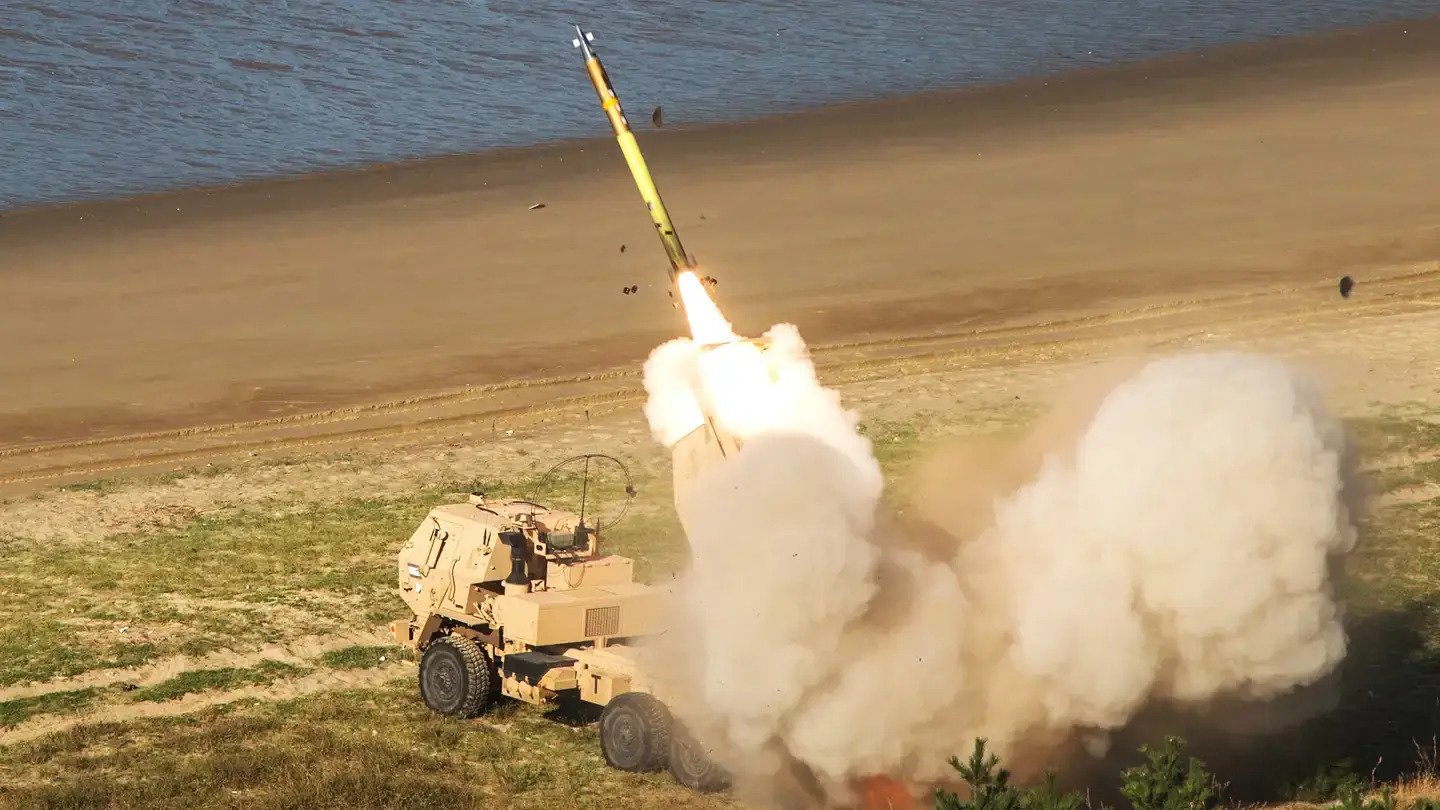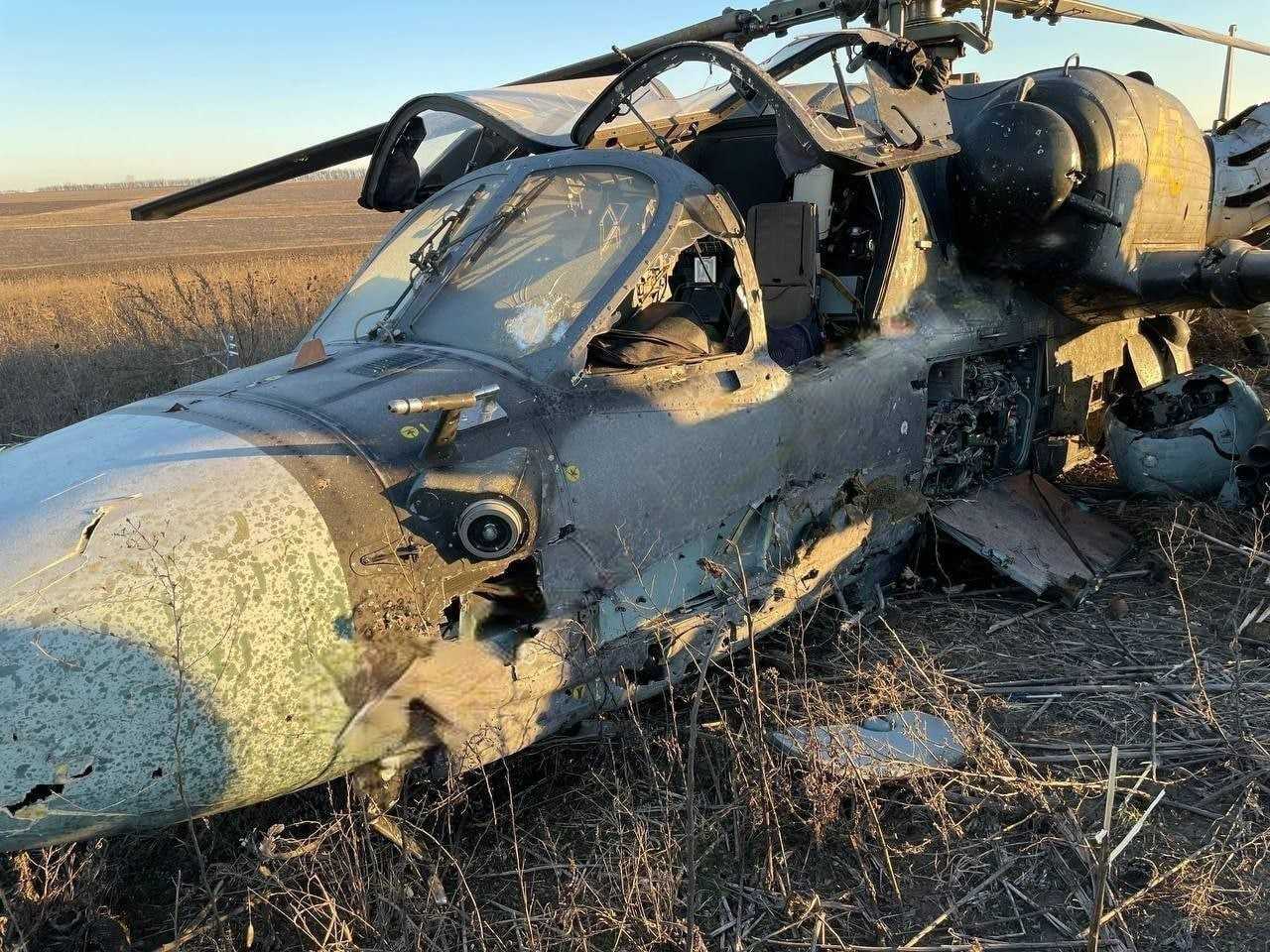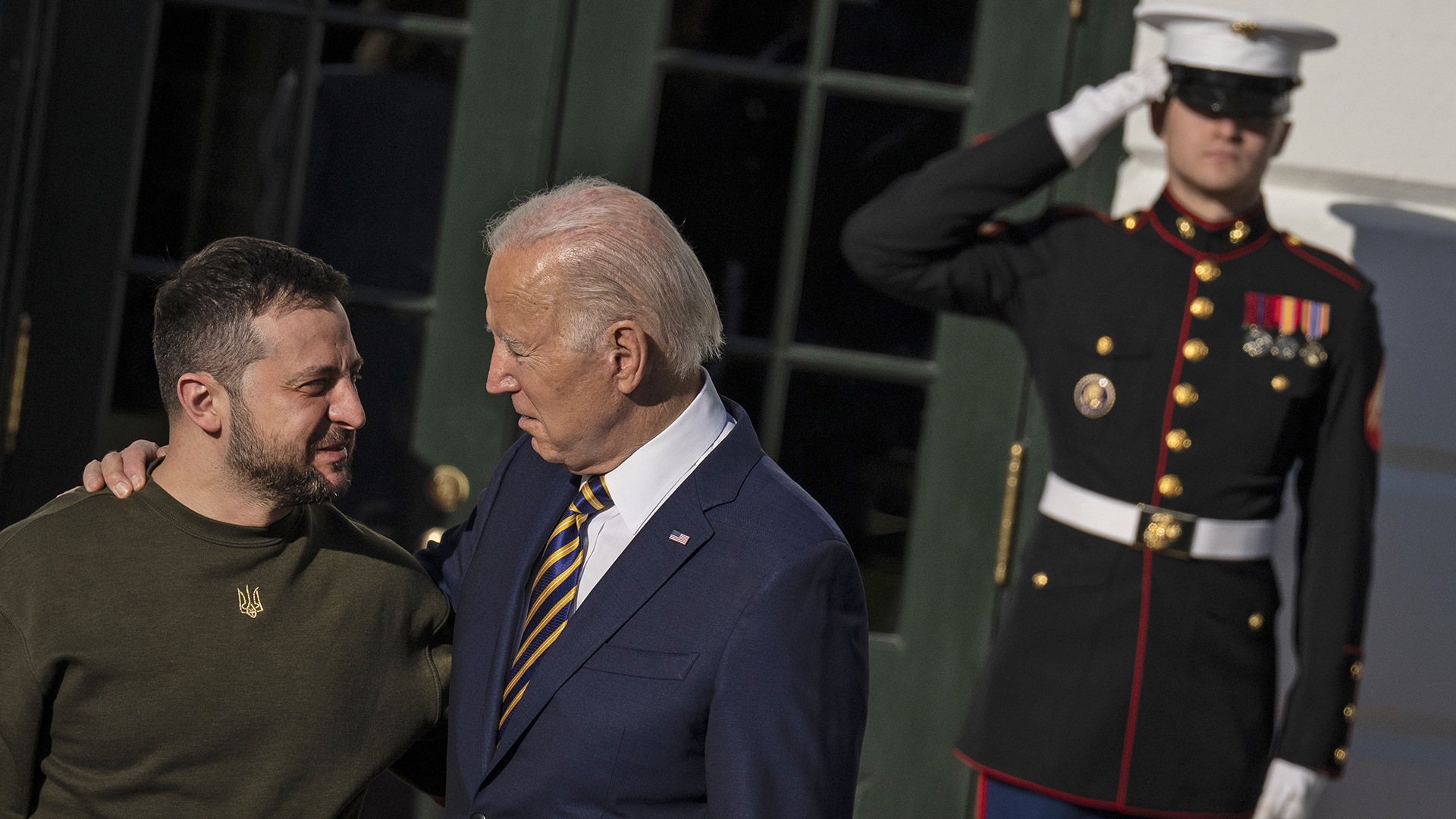Hours before Ukrainian President Volodymyr Zelensky arrived in Washington, D.C., Wednesday, the State Department released details of the new $1.85 billion military aid package for Kyiv.
In addition to the Patriot surface-to-air missile battery announced by a senior Biden administration official on Tuesday, the package will include an undisclosed number of precision aerial munitions, AGM-88 High-speed Anti-Radiation Missiles, and M142 High Mobility Artillery Rocket Systems, or HIMARS munitions, more than 65,000 additional howitzer rounds, 100,000 125mm tank ammunition rounds, dozens of mortar systems and associated ammunition as well as armored vehicles and other equipment.
Update: Check out our latest story on the Patriot battery transfer to Ukraine and the overall weapons donation package touted during Zelensky’s visit in this post.
“As Russia continues its brutal attacks against critical infrastructure in Ukraine, the United States welcomes President Volodymyr Zelensky to Washington, D.C. today to underscore our enduring commitment to the people of Ukraine,” Secretary of State Antony Blinken said in a statement. “Over the past 300 days, the Kremlin has tried and failed to wipe Ukraine off the map. Now, Russia is trying to weaponize winter by freezing and starving Ukrainian civilians and forcing families from their homes. In response, President Biden will announce today that the United States is providing critical new and additional military capabilities to help Ukraine defend itself from Russia’s ongoing brutal and unprovoked assault.”
The aid comes from two separate funds: $1 billion under Presidential Drawdown Authority (PDA) delegated by President Joe Biden. This is the 28th such package. In addition, it includes $850 million in support under the Defense Department’s (DoD) Ukraine Security Assistance Initiative (USAI). Combined, it brings the total amount of military assistance the Biden administration has provided to Ukraine to nearly $22 billion since January 2021.
Capabilities in the State Department’s $1 Billion December 21 PDA package are expected to include:
- One Patriot air defense battery and munitions;
- Additional ammunition for High Mobility Artillery Rocket Systems (HIMARS);
- 500 precision-guided 155mm artillery rounds;
- 10 120mm mortar systems and 10,000 120mm mortar rounds;
- 10 82mm mortar systems;
- 10 60mm mortar systems;
- 37 Cougar Mine Resistant Ambush Protected (MRAP) Vehicles;
- 120 High Mobility Multipurpose Wheeled Vehicles (HMMWVs);
- Six armored utility trucks;
- High-speed Anti-radiation missiles (HARMs);
- Precision aerial munitions;
- Over 2,700 grenade launchers and small arms;
- Claymore anti-personnel munitions;
- Demolition munitions and equipment;
- Night vision devices and optics;
- Tactical secure communications systems;
- Body armor and other field equipment.

Capabilities in DoD’s $850 Million USAI package are expected to include:
- 45,000 152mm artillery rounds;
- 20,000 122mm artillery rounds;
- 50,000 122mm GRAD rockets;
- 100,000 rounds of 125mm tank ammunition;
- SATCOM terminals and services;
- Funding for training, maintenance, and sustainment.
Aside from this latest round of military aid for Ukraine provided through PDA and USAI funding, Congress is working on a $44 billion spending plan for assisting Ukraine.
According to a Wall Street Journal assessment of summaries released by Democratic and Republican lawmakers, the package includes:
- $9 billion to arm, equip and train Ukrainian forces.
- $7 billion for the Pentagon to fund the surge of U.S. troops and gear to Europe, which are intended to stand as a bulwark against a potential Russian escalation onto NATO turf.
- $687 million for Army ammunition plants, to build capacity in the domestic munitions industry, according to a Senate Republican summary. This is on top of a $2.7 billion, five-year munitions procurement plan in the National Defense Authorization Act.
- $300 million for Ukrainian police and border guards, in part for the rescue and protection of civilians caught in Russia’s attacks on Ukraine’s population centers and civilian infrastructure.
- $13 billion in economic assistance to Kyiv.
- $4 billion to aid Ukrainian refugees.
- Millions to the U.S. Government Accountability Office and the State Department’s Office of Inspector General to track the spending and monitor Ukraine’s use of U.S. funds.
Aside from the Patriot battery, the highly intriguing thing on the list of new arms headed to Ukraine are the ‘precision aerial munitions.’ The possibility that Ukraine may be getting Joint Direct Attack Munitions (JDAMs) has been circulating in the press, we did a whole piece explaining how this could work and what their use would be that you can read here. While we don’t have a confirmation that this is indeed JDAM, it is clear that the U.S. will be arming Ukrainian tactical aircraft with air-to-ground weapons beyond the radar-destroying AGM-88 HARMs it is already providing.
Even with all this additional aid, Zelensky is expected to ask for longer-range munitions and large drones during his meeting with Biden and his national security team today, according to Politico.
Zelensky and his team are expected to make another round of pleas for Army Tactical Missile System (ATACMS) short-range ballistic missiles, and MQ-1C Gray Eagle and MQ-9 Reaper drones, Politico reported, citing a person familiar with the discussions.
As we have previously reported, the Biden administration has yet to sign off on the ATACMS, with a range of nearly 200 miles, out of fear of broadening the conflict. And we have also written about how even Ukrainian Air Force pilots don’t see those larger drones being useful.
Before we head into the latest coverage from Ukraine, The War Zone readers can get caught up on our previous rolling coverage here.
The Latest
For his first reported trip out of Ukraine since the war began, Zelensky first traveled by train to Poland.
From there, he boarded a U.S. Air Force C-40 VIP transit jet and later landed shortly before 1:30 P.M. at Andrews Air Force Base.
From there, he visited with President Joe Biden at the White House. During the press gaggle, Zelensky thanked Biden, Congress, and the American people. He then gave a medal from a Ukrainian Army captain to Biden. Zelensky had presented it to the man just hours earlier on the front lines. The HIMARS commander wanted to gift it to the President. You can see this exchange below.
The two are set to hold a joint press conference and then address a joint session of Congress at 7:30 P.M.
On the battlefield, little has changed in the past 24 hours, with the harshest fighting continuing in the Donetsk Oblast in and around Bakhmut, with additional fierce fighting along the P-66 Highway in Luhansk running from Svatove to Kreminna. Here are some key takeaways from the latest Institute for the Study of War assessment:
- Russian forces conducted limited counterattacks along the Svatove-Kreminna line.
- Russian forces continued offensive operations in the Bakhmut and Avdiivka areas.
- Russian forces are expanding defensive fortifications on the left (east) bank of the Dnipro River in Kherson Oblast.
- A Kremlin official deflected questioning surrounding a Moscow Oblast military recruitment officer’s Dec. 17 claim that Russian authorities will extend the service period for conscript soldiers.
- Russian President Vladimir Putin demanded that Russian security services intensify their efforts to counter pro-Ukrainian partisan activity.
After seeing his military suffer tremendous personnel and equipment losses in nearly 10 months of full-on war in Ukraine, Russian President Vladimir Putin on Wednesday vowed to spend whatever it takes to provide his forces with what they need.
And he said that neither Russian forces, nor his leadership, should be blamed for the defeats in Ukraine.
“The enemy acted stubbornly and effectively in the situation with Ukraine,” said Putin at the Russian Defense Ministry’s (MoD) collegium, according to a running account on the Telegram channel of the RIA Novosti official Russian news agency. “There is nothing to reproach Russia for.”
Still, Russia needs more and better arms, he said.
“I want to draw the attention of the Minister of Defense, the Chief of the General Staff, [and] all the commanders who are represented here, we do not have any restrictions on funding,” said Putin, speaking to his top military leaders at a meeting to review the current year’s operation and plan next year’s objectives. “The country, the government give everything that the army asks. Everything. I hope that the answer will be properly formulated and the corresponding results will be achieved.”
In an apparent nod to lessons learned in Ukraine, where his often poorly trained, poorly equipped troops have lost much of the territory they conquered in the early days of the full-on invasion, Putin said it was “necessary to expand the arsenal of modern shock weapons in the Russian army.”
Russian troops “must have everything at the highest level, including weapons, night vision devices, there cannot be trifles on the battlefield, first-aid kits, uniforms, shoes – everything must be at a high level, modern and reliable.”
Putin also said that “artificial intelligence technology should be used at all levels of decision-making.”
Why these are certainly powerful statements, Russia’s ability to actually make them into reality is questionable.
On the battlefield, horrific videos showing the extent of damage to Bakhmut continue to emerge on social media.
A Russian Ka-52 Alligator helicopter was apparently destroyed in a friendly fire incident, reportedly shot down by a Russian Pantsir-S1 air defense system in Zaporizhzhia Oblast, according to the Ukrainian Military Center, citing a pro-Russian Telegram channel.

Russia also managed to destroy Ukrainian equipment, in this case, two M-777 155mm towed howitzers that were taken out by a Lancet drone. Apparently, special camouflage screens didn’t help, according to the Ukraine Weapons Tracker OSINT group.
Video emerged on social media of more Russian T-90M “Breakthrough” tanks appearing on the battlefield, in this case apparently in the Luhansk Oblast. Some have already been seized by Ukrainian forces and repurposed for their efforts. You can read more about Russia’s most capable operational tank here.
Meanwhile, the Ukrainian initiative to clean up the large amount of unexploded mines around the country continues as those working on the program look for the best ways to minimize risk.
Over the course of the war, attack helicopter crews on both sides have been using a lofting technique for firing unguided munitions that increases range and minimizes risk. Here is the latest such example of Ukrainian helicopters using this technique, up close and personal.
That’s it for now. We will update this post with more information later.
Contact the author: howard@thewarzone.com
